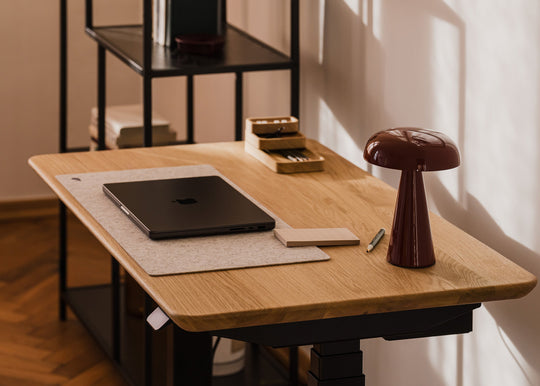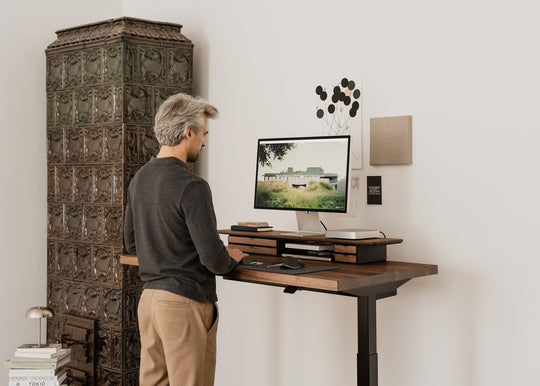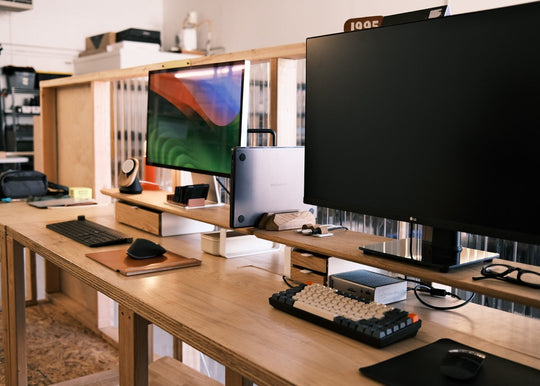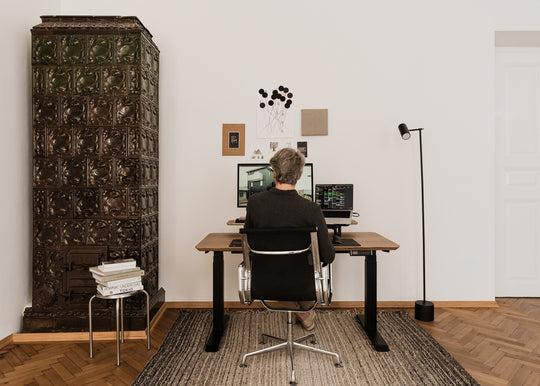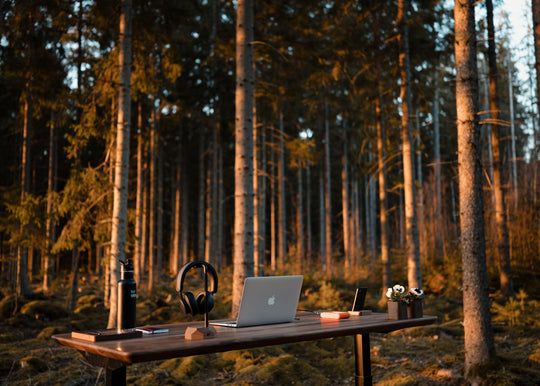
Practicing self-care while working from home. How does wood fit into this practice?
Remote work often seems like a dream come true as it allows you to organize your day according to your needs. And, for the most part, that’s true: you spend no time commuting, you can work from the quiet of your own home, and you can curate your workspace to suit you perfectly. However, this seemingly idyllic setup lends itself to another problem – blurring the lines between professional and private life. That’s why a systematic self-care practice is something you should quickly include in your schedule.

Photo by Anthony Tran on Unsplash
Is taking a break a waste of time?
The first and most basic rule for maintaining your well-being while working from home is to introduce regular breaks in your workday. We recognize that this might not be easy when deadlines hang over your head like the Sword of Damocles. But once you develop this habit, you will see improvement in your work routine – time will become your ally. Systematic breaks during which you step away from your computer, get up for even a moment, and catch a breath can lead to an over 50% increase in productivity. A break is, therefore, definitely not a waste of time, but rather the key to achieving healthy productivity and good work hygiene.
Read more in our article on the 3M break system: micro, meso, and macro.

Don’t get stuck sitting
Even the most ergonomic office chair cannot counterbalance the health issues brought about by sitting at a desk for hours and hours every day – this is an obvious and well-known fact we still need to be reminded of periodically. The right amount of movement is paramount while working from home, where it’s easy to get stuck sitting all day. Use your breaks as prompts to get up from your desk. If you have a desk with regulated height, switch position from sitting to standing. Walk around your flat, and if you have more time, take a short stroll outside. Stretch your limbs, do some light exercises, or dance to your favorite music for a minute or two. Take advantage of the privacy of your own home – it’s one of the main benefits of working remotely.
Working from home can make you forget about the outside world, especially when you don’t have children to pick up from school or a dog to walk with. Meanwhile, outdoor exercise and fresh air are both important parts of physical and mental well-being. Try to get out of the house every day. Even if you don’t have any errands to run. Even if you don’t feel like it. Even if it’s raining – after all, you’re not made of sugar and you won’t melt. Go out, even if it’s a short walk around your neighborhood.

Photo by No Revisions on Unsplash
Multitasking – don’t go there
Multitasking is a trap that’s very easy to fall into when tasks start piling up and everything is due yesterday. However, the tempting offer of completing a few assignments at the same time can only lead you astray. Being able to concentrate on multiple things at once is a myth. In reality, instead of achieving a state of heightened productivity, our hasty switching from task to task increases tiredness and distraction, as well as ultimately wasting our time. It often hurts the quality of your work, your well-being, and your self-esteem. Try setting clear priorities and improving concentration rather than multitasking.

Practicing mindfulness
Conscious breathing, self-reflection, calmness, and stillness – mindfulness is yet another pillar that props up your well-being. Introduce mindful practices for both during work and after you clock out. Regardless of whether you’re in a meeting, replying to emails, or working on an urgent assignment, try to fully focus on what you’re doing instead of letting your mind wander into the future or onto other tasks.
Designate time to ‘unplug’ and enjoy some mindful rest after work: you can create a special ritual of moving on from the professional attitude into off-duty mode. Journaling can be a great help in organizing your thoughts. Even a few sentences, written in the morning or after work, will allow you to see things from a new perspective and maybe even notice details you might have missed in the sheer volume of daily responsibilities.

Photo by Toa Heftiba on Unsplash
Talk to people
Maintaining positive relationships with other people is yet another important aspect of self-care. Remote work can sometimes result in isolation, and excessive loneliness is downright dangerous. If you can, try to chat to your coworkers online and don’t make it all about work. If you live in the same city, suggest going out together.
Don’t forget about your private life: nurture your relationships with family and friends. Start taking part in activities that involve a lot of human interaction and allow you to get to know new people: think a neighborhood volleyball team, amateur choir, or a book club. Those regular interactions not only lift your mood but also broaden your horizons, helping you better understand the world and yourself.

The relaxing qualities of wood
A tidy, well-designed, and ergonomic workspace plays a huge part in your professional self-care practice. But a perfectly fitted desk and chair or a set of accessories and organizers are not enough. It turns out that the materials with which they were made matter too. This is where wood comes in.
Research conducted over the past few decades shows that interiors rich in wood have a positive impact on people’s health and well-being. It decreases the level of cortisol and regulates heart rate and blood pressure. Negative emotions simply decline. According to studies that research the impact of touching natural wood (in this case, white oak) on the activity within the left and right lobes of the prefrontal cortex, contact with wood lowers stress levels and may benefit brain function.
This calming effect of wood gets brought out due to humanity’s biophilic bias – our bodies tend to like natural materials most. Although we live in civilization, we are still a part of nature – our brain remembers it well, and that’s why we feel most relaxed, calm, and safe when surrounded by natural materials like wood.
While designing your home workspace, try to include as many wooden elements as possible, both as furniture, accessories, and decorations. The unmistakable smell of natural wood, its color, structure, unique grain pattern, which in itself constitutes a work of art (or work of nature), great acoustic qualities, and optimal air moisture control – all this helps you find the right rhythm that combines productive work with physical and mental wellbeing.


